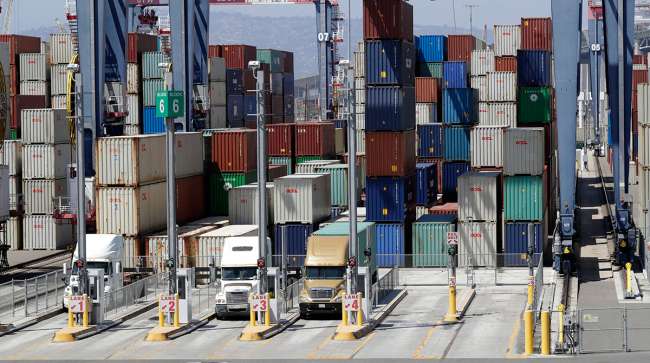Associated Press
US Trade Deficit Widened to $50.1 Billion in July

WASHINGTON — The U.S. trade deficit widened for the second straight month in July, reaching the highest level since February, as imports hit an all-time high. The deficit in goods with China and the European Union set records.
The Commerce Department said Sept. 5 that the deficit in goods and services — the difference between what America sells and what it buys from other countries — rose to $50.1 billion in July from $45.7 billion in June. Exports slipped 1% to $211.1 billion. Imports increased 0.9% to a record $261.2 billion on increased purchases of trucks and computers.
The deficit rose despite efforts by President Donald Trump to bring it down by renegotiating trade agreements and imposing taxes on imports.
The United States already has slapped tariffs on $50 billion in Chinese goods in a dispute over Beijing’s aggressive efforts to challenge American technological dominance. It is taxing imported steel and aluminum and may target auto imports next, causing a rift with the EU. Trump also has threatened to exclude Canada from a revamped North American trade agreement.
RELATED: US Factories Grew at Faster Pace in August
So far, the president’s aggressive policies have had little impact on the trade numbers. The goods deficit with China rose 10% in July to a record $36.8 billion. The gap with the EU shot up 50% to a record $17.6 billion and with Canada nearly 58% to $3.1 billion. The July deficit with Mexico, though, plunged 25% to $5.5 billion.
So far this year, the trade deficit is up 7% from January-July 2017.
Trump views trade deficits as a sign of economic weakness, caused by bad trade deals and abusive behavior by America’s trading partners.
Mainstream economists blame persistent U.S. trade deficits on an economic reality that can’t be changed much by trade policy: Americans spend more than they produce, and imports fill the gap. The strong U.S. economy is also encouraging Americans to buy more foreign products.
In July, the United States ran a deficit of $73.1 billion in goods such as cars and machinery, but recorded a surplus of more than $23 billon in services such as education and banking.


